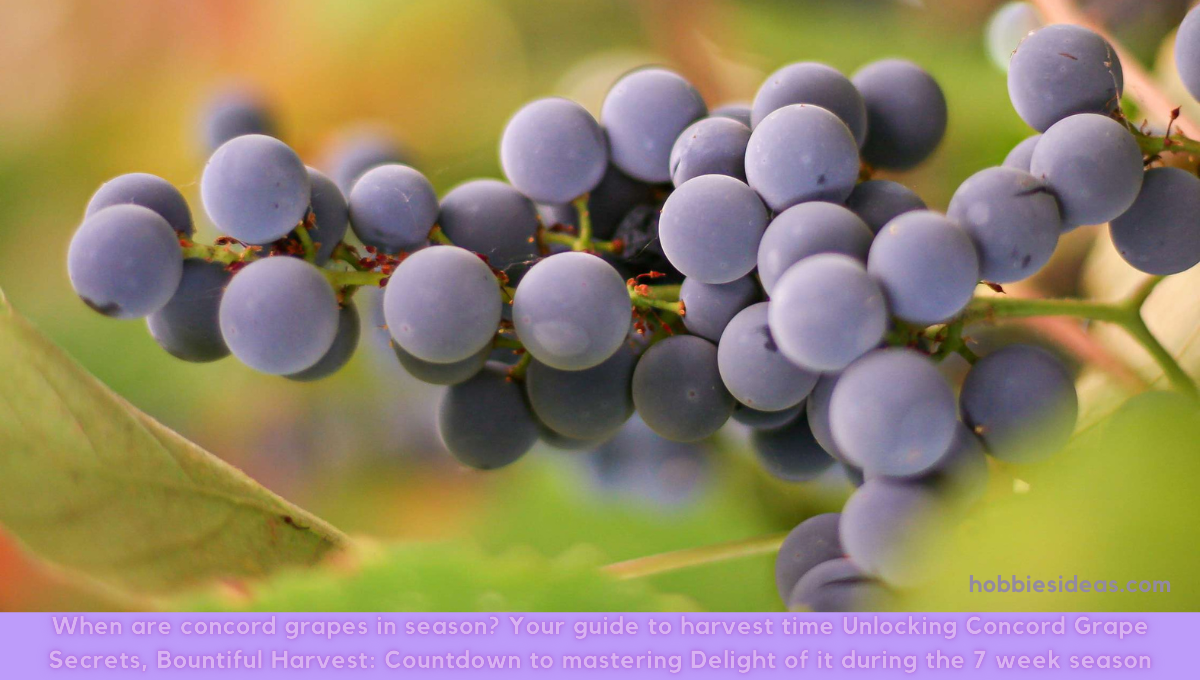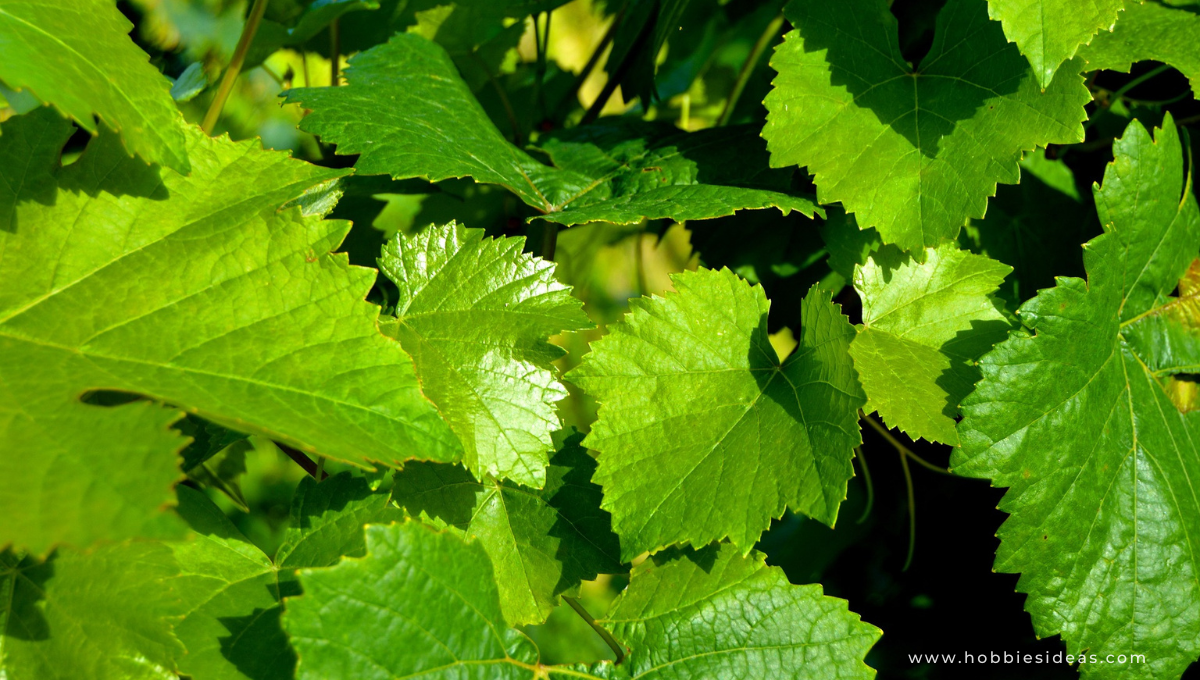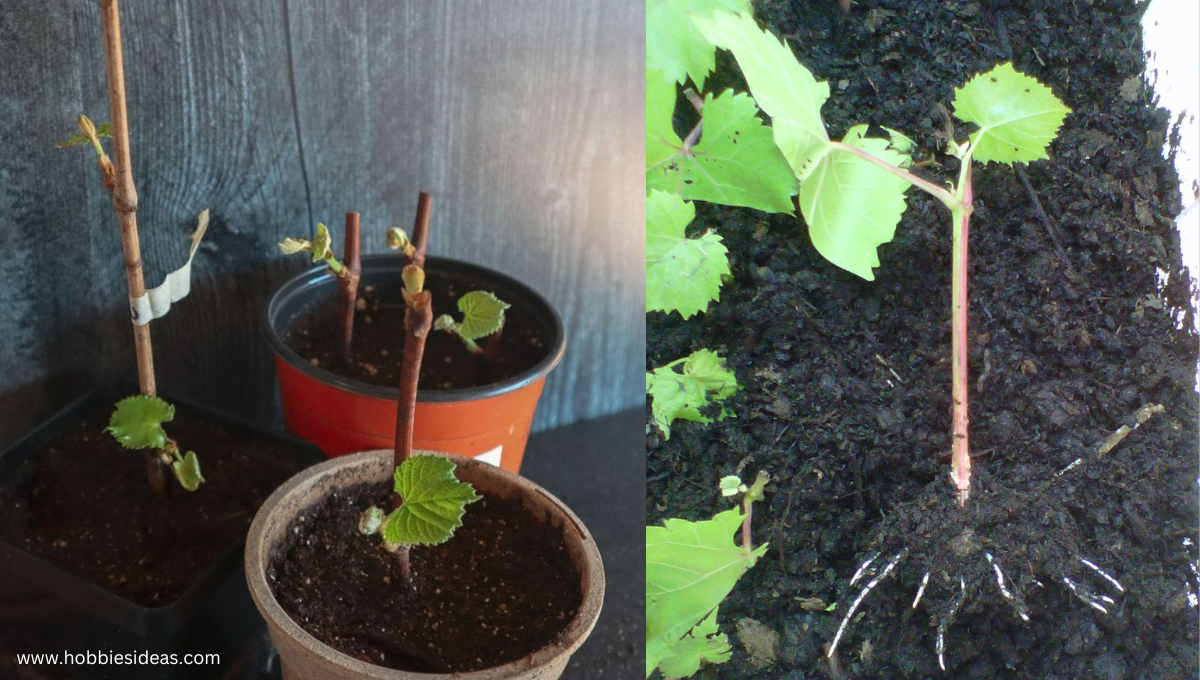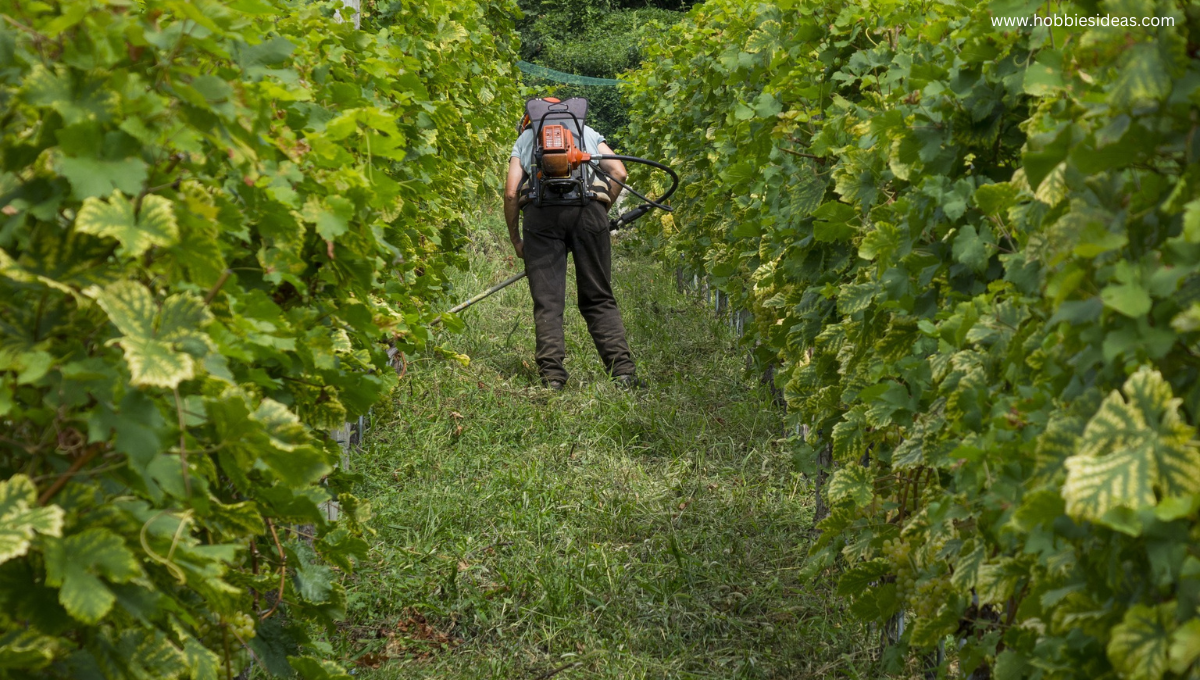Did you know there’s a grape variety called Vitis labrusca that packs a punch with its unique flavor and deep purple color? Enter the Concord grape! Native to North America and named after the town of Concord in Massachusetts, these organic grapes have become incredibly popular. They are not only used for making delicious juices, jellies, wines, and other grape products but also boast an impressive array of health benefits.
Rich in antioxidants and beneficial nutrients, these grapes are a powerhouse of goodness. So, if you’re looking for a flavorful fruit that offers both taste and nutritional value, look no further than the mighty Concord grape. Get ready to indulge in this vibrant gem from nature’s vineyards with a tasty jelly sandwich!
History and Association of Concord Grapes
Concord grapes, also known as Vitis labrusca, have a fascinating history and strong association with traditional American flavors. These grapes gained widespread popularity in New England due to their hardiness and ability to thrive in various climates. They are also commonly used in the production of kosher wine. Developed by Ephraim Wales Bull in the mid-19th century, concords have become a beloved fruit in the region.
The unique flavor profile of Concord grapes makes them a favorite for classic recipes like grape pie or jelly. Their distinct taste adds a delightful sweetness to these dishes, creating a nostalgic experience for many. Concord grapes are also commonly used to make kosher wine, offering various options for those seeking a delicious and certified opportunity.

Not only are concord grapes beloved for their flavor, but they also hold cultural significance as the official state fruit of Massachusetts. This association further highlights the deep-rooted connection between Concord grapes and American heritage. Whether enjoyed as wine, juice, or jelly, concord grapes symbolize tradition and taste.
The appreciation for Concord grapes extends nationwide, as people from various backgrounds enjoy the rich history and delicious taste of this wine, juice, and jelly-producing fruit.
Ideal Climate for Growing Concord Grapes
Concord grapes, also known as welch grapes, are delightful fruit that thrives in specific climatic conditions. To ensure optimal growth and a bountiful harvest of these delicious grapes, it is essential to understand the ideal climate requirements for cultivating concord grapes.
Thrives in Temperate Regions
Concord grapes, known for their use in making wine and juice, flourish in temperate regions like the US. These grapes thrive in climates with warm summers and cold winters, which provide the ideal conditions for their growth and development.
Frost-Free Days
Concord grapes require a minimum of 150 frost-free days each year to reach their full potential. These precious days allow the grapes to ripen fully and develop their characteristic flavor and sweetness. This is essential for producing high-quality concord wine and juice.

Versatile Soil Preferences
While Concord grapes, known for their use in wine and juice production, can tolerate various soil types, they thrive best in a well-drained loamy soil. However, they are adaptable enough to grow successfully in different soil compositions. Whether it’s sandy or clayey soil, as long as it drains well, these resilient vines will find a way to prosper.
Sunlight Requirements
Sunlight plays a crucial role in the growth of Concord grapes. These grapevines require at least six hours of direct sunlight daily to achieve optimum results. When exposed to ample sunshine, the plants can produce an abundance of juicy clusters bursting with flavor. This is why Concord grapes are so perfect for making wine and juice.

Growing Concord grapes, a popular variety for making wine and juice necessitates understanding their preferred climate conditions. With warm summers and cold winters being key components, these hardy vines can thrive almost anywhere with proper care. Whether you have sandy or clayey soil, as long as it drains well, you’re good to go! Just ensure your grapevines receive plenty of sunlight throughout the day to bear fruit that will tantalize your taste buds with their wine and juice potential.
Planting and Care Guide for Concord Grape Vines
To successfully grow concord grapes, follow these simple steps:
- Select healthy bare-root grape vines or potted grape plants from reputable nurseries. This ensures you start with solid and disease-free plants for making grape juice, wine, and jelly.
- Plant the grape plants when they are dormant in early spring or late fall. This allows them to establish their root systems before the growing season begins. Whether you are growing table grapes, wine grapes, or grape juice grapes, this planting strategy is essential for their successful growth.
- Space the grape plants about 8 feet apart to provide adequate air circulation and sunlight exposure. This helps prevent diseases and promotes healthy table grapes, wine, and grape juice.
- Provide sturdy trellises or support systems for the wine vines to climb on. Concord grapevines are vigorous wine climbers, so giving them something to latch onto as they grow is essential.
Following these guidelines for growing Concord grapevines ensure success with your wine production. Remember to choose quality wine grape plants, plant them at the right time, provide proper spacing between the vines, and offer support as they grow.
Happy gardening!
Training Young Concord Grape Vines
Prune young wine vines during their first winter to establish a robust framework for future growth. Removing excess branches and shaping the vine encourage healthy wine grape growth and maximize fruit production.
Train main shoots along the trellis wires using soft ties or twine as support. As the grapevine grows, guide the central nodes along the trellis wires to provide stability and prevent them from sagging or breaking under their weight. This ensures proper alignment and allows easy access when it’s time to harvest those delicious table grapes.

To maintain a healthy and balanced wine grapevine, keeping one central trunk with lateral branches spaced evenly along the trellis wires is essential. This systematic growth pattern promotes optimal sun exposure, airflow, and vine health. By following these guidelines recommended by the Concord Grape Association, you can ensure the success of your grape juice production.
To encourage vine development, it’s essential to avoid excessive pruning of grape plants during the first few years. While pruning is crucial for maintaining grapevine health, overdoing it in the initial stages can hinder growth. Allowing young grape plants some leeway enables them to establish a robust root system and promotes vigorous growth later on. This is especially important for wine production.
Following these guidelines for training young Concord grape vines, you can set your wine plants up for success. Remember that proper care includes monitoring for common issues like downy and powdery mildew, which can affect vine health if left unchecked. With patience and attention to detail, your wine grape vines will thrive year after year.
It is essential to prune grape vines in winter to maintain a robust framework for vine development. Pruning involves cutting back the lateral branches and training the shoots along the trellis wires for support. It is crucial to leave a central trunk and space the vines properly to ensure optimal growth. However, excessive pruning should be avoided.
Fertilizing Concord Grape Vines
To ensure optimal growth and fruit production for your Concord grape vines, providing them with the right balance of nutrients is essential. Here are some key factors to remind when fertilize your grapevines for wine production.

- Use balanced fertilizers: During the growing season, it’s essential to supply your Concord grape vines with fertilizers that are rich in nitrogen, phosphorus, and potassium. These nutrients are crucial in supporting healthy plant development and fruit production.
- Timing is essential: Apply fertilizers in early spring before new growth starts. This allows the vines to absorb the necessary nutrients as they begin their active growth phase. Apply fertilizers again after the fruit is set to support the ongoing nutritional needs of the plants.
- Avoid excessive nitrogen: While nitrogen is vital for plant growth, unreasonable application can lead to an overabundance of vegetative growth at the expense of fruit production. It’s crucial to strike a balance and avoid overloading your grapevines with nitrogen-rich fertilizers.
- Consider soil testing: Conducting a soil test can provide valuable insights into the specific nutrient requirements of your grapevines. By analyzing the soil composition, you can determine any deficiencies or excesses in nutrients and tailor your fertilizer application accordingly. This ensures that your vineyard maintains optimal health and productivity.
These guidelines for fertilizing Concord grape vines provide them with the necessary nutrients for robust growth and abundant fruit production. Remember to strike a balance between nutrient availability and avoiding excessive vegetative growth. Conducting a soil test will further assist you in fine-tuning your fertilizer regimen for optimal wine production.
Now give those delicious Concord grapes, perfect for making wine, all the TLC they deserve!
Conclusion
In conclusion, concord grapes are a true beauty in the world of fruits and wine. Their rich history and association make them a beloved choice for many grape enthusiasts. The ideal climate for growing Concord grapes ensures that they thrive and produce the best flavors for wine. Following a planting and care guide, you can cultivate your Concord grape vines and enjoy their delicious fruits and wine.
Training young Concord grape vines is crucial for growing healthy wine grapes. Proper growth and support are essential for developing these vines while fertilizing them provides the nutrients for healthy wine production. With these tips, you can confidently embark on your journey of growing concord grapes for wine.
If you have any questions about growing Concord grapes for making wine, check out these frequently asked questions.
Frequently Asked Questions about Growing Concord Grapes
How long does it take for Concord grape vines to bear fruit?
Concord grape vines typically bear wine fruit within 2 to 3 years after planting. However, it’s important to note that the exact timing can vary depending on climate, soil conditions, and proper care.
Can I grow Concord grapes in containers or pots?
Yes, you can grow Concord grapes in containers or pots. It’s a great option for wine enthusiasts with limited space or who want more control over the growing conditions. Choose a large enough container with good drainage and provide sturdy support for the vines to ensure a successful wine grape harvest.
What are common pests and diseases that affect Concord grapes?
Concord grapes, commonly used for making wine, are susceptible to various pests and diseases. Some common wine grape pests and diseases that affect Concord grapes include.
- Grapevine aphids: These tiny insects feed on the vine’s leaves, stems, and wine.
- Powdery mildew: A fungal disease that appears as a fine white coating on grapevine leaves, affecting the quality of the wine.
- Black rot is a fungal infection that affects grape vines, causing black spots on the fruit and leaves. It can harm the quality of wine produced from these infected grapes.
- Japanese beetles can defoliate grapevines if left unchecked, posing a threat to the wine industry.
To prevent or manage issues with wine production, regular inspection, proper pruning, and using organic pesticides when necessary can help maintain healthy vines.
When is the best time to harvest Concord grapes?
The best time to harvest wine grapes, such as Concord grapes, is when they reach full maturity. This usually occurs in late summer or early fall when the wine berries have turned deep purple with a slight bloom. Gently taste a few wine grapes from different clusters to ensure they are sweet enough before harvesting.
Remember not to rush the wine harvest, which may result in less flavorful grapes. Consider weather conditions during this period since heavy rains or frost can affect grape quality and ultimately impact the taste of the wine.
By addressing these frequently asked questions about growing Concord grapes for wine, you’ll be better equipped to cultivate healthy vines and enjoy delicious homegrown fruit.

